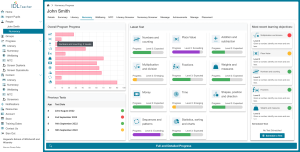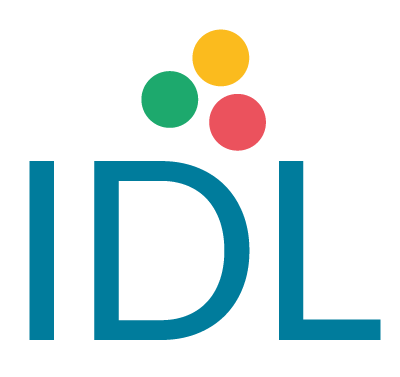Numbers and Counting
This strand of reasoning encompasses fundamental concepts including numerosity, cardinality and quantity. Pupils learn how to count forwards and backwards as well as identify quantities on sight e.g., counting dots.
IDL Numeracy is a maths software resource that helps to improve the ability of low-attaining learners in mathematics. It includes a fully graded course to support the National Curriculum for KS1 (Key Stage 1) maths and KS2 (Key Stage 2) maths. The lessons in IDL Numeracy ensure inclusivity by reducing the stress those with dyscalculia would ordinarily feel when faced with mathematical problems. After a few hours using IDL Numeracy, learners will find a familiarity with the lessons, and because the lesson mechanics remain the same, they gain the confidence they need to tackle problems, even those they have never encountered before.
Make An Enquiry Watch Our Video GuideYour IDL Numeracy licence includes access to the Numeracy Screener and Multiplication Tables Check at no additional cost.
A 2 product annual school bundle licence provides unlimited user access to any 2 IDL products. This bundle includes home access for pupils.
Buy this licenceA Multi-User Annual Licence for IDL Numeracy for both Primary and Secondary schools, which includes home access as well as access on iPads/Android devices.
Buy this licenceSave money with an annual school bundle licence and get unlimited user access to IDL Literacy, IDL Numeracy and IDL Wellbeing. This bundle provides access to IDL Screeners, Multiplication Tables Check and home access for pupils.
Buy this licenceOur Numeracy software is used predominantly by learners with dyscalculia, although not limited to those with special educational needs. The software can also be used to support any learners who struggle with numeracy. It can also be used for teacher training and planning, as well as for school psychologists and educational specialists.
Our numeracy software contains:
IDL Numeracy is an interactive mathematics resource designed to help children improve their numeracy skills.
The IDL Numeracy software resource contains:
Every lesson is designed to match individual targets set out in the National Curriculum as well as promote overall understanding of mathematical methods. There are eleven distinct strands in the program, each individually tracking a pupil’s ability in those principles.
For example, a pupil might be operating at the understanding of a Year 3 pupil when it comes to Addition and Subtraction but struggles with money problems, working at a Year 1 level. IDL Numeracy will place them according to these strengths and weaknesses, providing more insightful feedback to teachers and boosting learners where needed.

This strand of reasoning encompasses fundamental concepts including numerosity, cardinality and quantity. Pupils learn how to count forwards and backwards as well as identify quantities on sight e.g., counting dots.

Pupils explore the applications of place value and decimal notation using our drag-and-drop interface and real-world problems to build competence.

Some of the core operations of numeracy, our program teaches pupils to efficiently and effectively add or subtract quantities. These lessons combine word problems, different representations of values and column method as well as many more variations.

Our strand-curriculum guides pupils through formal written and mental methods to multiply and divide. Pupils experiment with grouping, factor pairs and understanding the importance of commutativity.

Fractions are demonstrated in a wide range of methods from easy-to-comprehend diagrams all the way to decimals and equivalent fractions. The correlation between whole values and fractions of values is reinforced throughout.

Our weights and measures strand embeds understanding of negative values in temperature, equivalence in weights and how real-life problems can be solved using rational methods. Pupils learn to read thermometers and experience related units of measurement.

The money strand of IDL Numeracy includes problems of a practical context to help build confidence and mental arithmetic skills. Pupils learn how to calculate total costs, change and use multiple denominations of coins to pay.

From analogue to digital clocks, our time lessons show pupils how to read and solve clock-based problems. The lessons scaffold this knowledge into more complex problems based on duration, deductive reasoning and conversion of values.

Orientation, translation and symmetry are only a few of the skills demonstrated in these lessons. This strand begins with recognizing 2D and 3D shapes and the criteria thereof before moving on to comparing nets, co-ordinate locations, terminology and overall spatial reasoning.

Problems requiring proportional awareness, sorting from smallest to largest and then expanding pupil’s deductive skills. These lessons include whole values and fractions, promoting numerical and shape pattern recognition and more.

This strand comprehensively covers data organisation and charts, both reading and compiling them. Pupils will learn to accurately understand a range of tables and charts, how and why they are used and more. This strand also encompasses co-ordinates and plotting points to solve a number of problems.
Although the program includes a vast variety of different lessons, each are built to the IDL methodology to be accessible, engaging and effective. The principles will always be the same; mathematical problems are presented in a fun and intuitive way. Each problem comes complete with auditory instructions, along with additional functions to help find the solution or simplify the puzzle. Each question is solved by moving items around the screen or by clicking on the right items making it even more accessible to pupils with a range of difficulties across any platform
Every element of the National Curriculum is included with individual targets to monitor progress like never before. Pupils’ learning is no longer tied to a single linear progression but can exist at different levels on multiple strands of understanding – making it easier than ever to isolate areas of difficulty and target interventions.

The IDL Numeracy Screener has been developed to provide a simple to use online test that will highlight number SEN.
Learn More
Math Tutorials are a new set of online math tutorials that present the main topics in the school curriculum in an easy-to-follow, step-by-step way.
Learn More
The IDL Literacy Intervention Software is a speaking-computer based multi-sensory system which supports learners with dyslexia and other learning difficulties.
Learn More
The IDL Literacy Screener is a simple, effective online tool that students and teachers can use to highlight dyslexic-type difficulties.
Learn More
IDL Wellbeing is an exciting new product designed to integrate with a whole-school approach to mental health, toughness and behaviour management.
Learn More
⭐Introducing our IDL Wrapped ⭐
What a year 2025 has been!!
We’re incredibly proud of everything we`ve achieved together as a team this year, and we can’t wait to see what 2026 brings! 🥳
#Spotifywrapped #YearRecap #Dyslexia #Dyscalculia #DyslexiaSupport

Dyslexia shouldn’t stop anyone from feeling confident enough to read their nativity lines. ⭐
With IDL Literacy, you can support learners with dyslexia and other learning difficulties to improve their reading and spelling skills while boosting their confidence! 🎄
Discover more about IDL Literacy here 👉 https://idlsgroup.com/our-products/literacy/
#nativity #dyslexia #readingsupport

Ready to defy dyslexia and dyscalculia? 📖
IDL Literacy and Numeracy helps students rise above challenges and conquer maths and literacy with confidence!
Our specialist software and amazing support brings magic to learning for thousands of schools around the world. You could say we are quite popular! 🎵⭐
Have you seen the new Wicked: For Good movie yet? 💚💗
#Dyselxiasupport #Dysclaculiasupport #Wickedmovie #Learningsolutions #Wicked

Read the November External Digest 🚀
Providing a monthly update from the IDL Development team, the digest includes:
⭐Research Roundup
⭐Did you know sections
⭐Fact Zone
⭐Release notes
Find it on the IDL website here 👉 https://ow.ly/ytu850XxQz0
#LessonSupport #Progresstracking #Dyslexiaaoftware #Dyslexiascreener #Phonics

⭐ Why do school leaders choose IDL? ⭐
We spoke to schools already using IDL in the classroom and here’s why they recommend us over anyone else!
❓ Did you know?❓
IDL provides detailed progress reports, enabling teachers to track student performance, identify areas of difficulty and tailor their teaching strategies to meet individual needs.
Start a free trial here, no payment details required! 👉 https://idlsgroup.com/book-a-free-trial/
#Learnerprogress #Teachersupport

This website uses cookies so that we can provide you with the best user experience possible. Cookie information is stored in your browser and performs functions such as recognising you when you return to our website and helping our team to understand which sections of the website you find most interesting and useful.
Strictly Necessary Cookie should be enabled at all times so that we can save your preferences for cookie settings.
If you disable this cookie, we will not be able to save your preferences. This means that every time you visit this website you will need to enable or disable cookies again.
This website uses Google Analytics to collect anonymous information such as the number of visitors to the site, and the most popular pages.
Keeping this cookie enabled helps us to improve our website.
Please enable Strictly Necessary Cookies first so that we can save your preferences!

